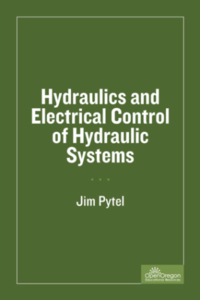Open Oregon Educational Resources
Hydraulics and Electrical Control of Hydraulic Systems
It's all systems go for learning about hydraulic systems. An eBook provides a set of videos and exercise questions for a semester-long course on hydraulics. Six units introduce hydraulics, Pascal's law, hydraulic applications, flow...
Curated OER
Hydraulics and Pneumatics
Seventh graders participate in an experiment using syringes. In this physics lesson students demonstrate the movement and principles of pneumatics and hydraulics.
Curated OER
Moving Things with Pressure
Fifth graders complete a construction project. In this pneumatic system lesson students study the basic hydraulic systems and construct their own project.
Curated OER
Robots
Learners explore the two kinds of fluids: liquids and gases. They explain that liquids (water), unlike gases (air), cannot be compressed. This property makes them ideal for hydraulic work applications.
Teach Engineering
Fluid Power Basics
What can bulldozers and screen doors have in common? Use this lesson on fluid power to find out. It begins with some simple teacher demonstrations, includes a couple of videos, and culminates with an inquiry-based activity to investigate...
TeachEngineering
Teach Engineering: The Portable Fluid Power Demonstrator (Pfpd)
Working as teams, students learn the basics of fluid power design using the PFPD as their investigative platform. Students will investigate the similarities and differences between using pneumatic and hydraulic power in the PFPD. While...
TeachEngineering
Teach Engineering: Fluid Power Basics
Students learn about the basic fundamental concepts regarding fluid power, which includes both pneumatic, which utilize gas, and hydraulic, which utilize liquid, systems. Both systems contain four basic components: a reservoir, a pump or...
MadSci Network
The Mad Scientist Network: How Is a Jet Engine Started?
Using a question and answer format, this page explains the details of how a jet engine can be started. The different types of starters and when they are usually used is discussed.









